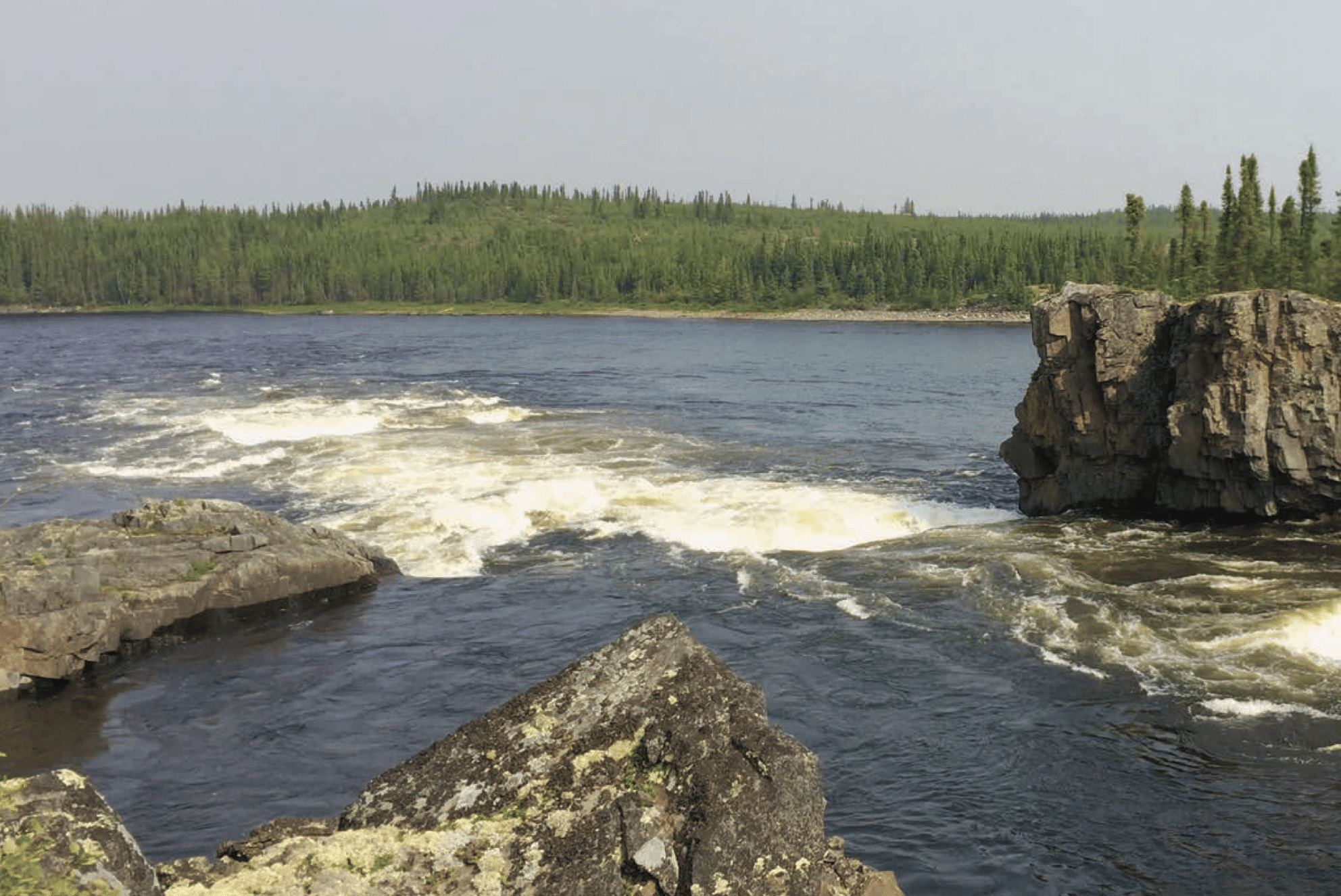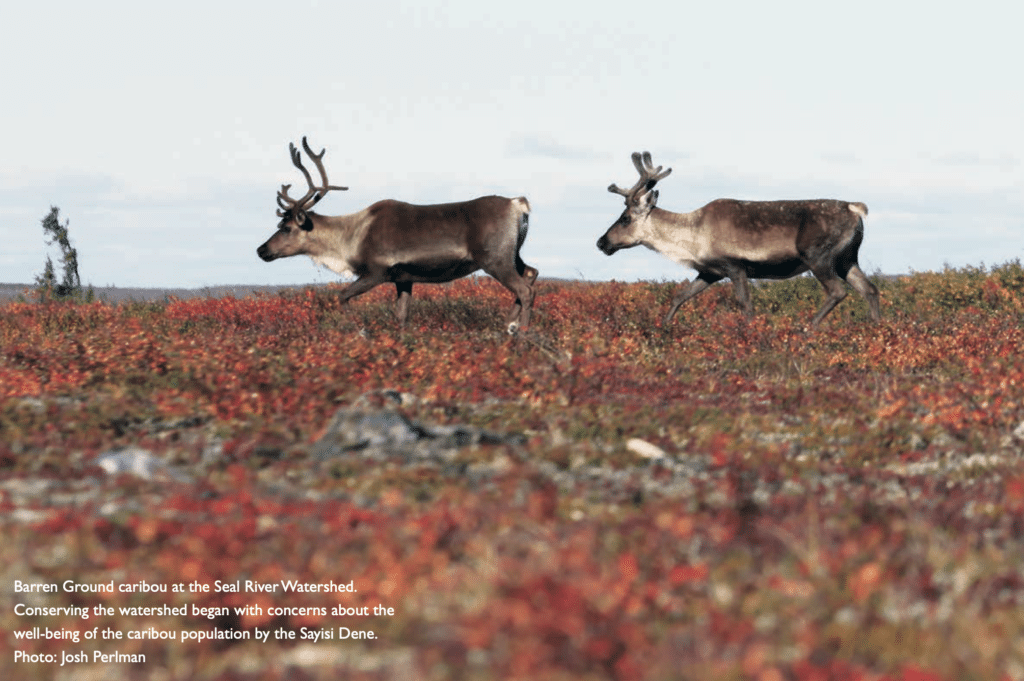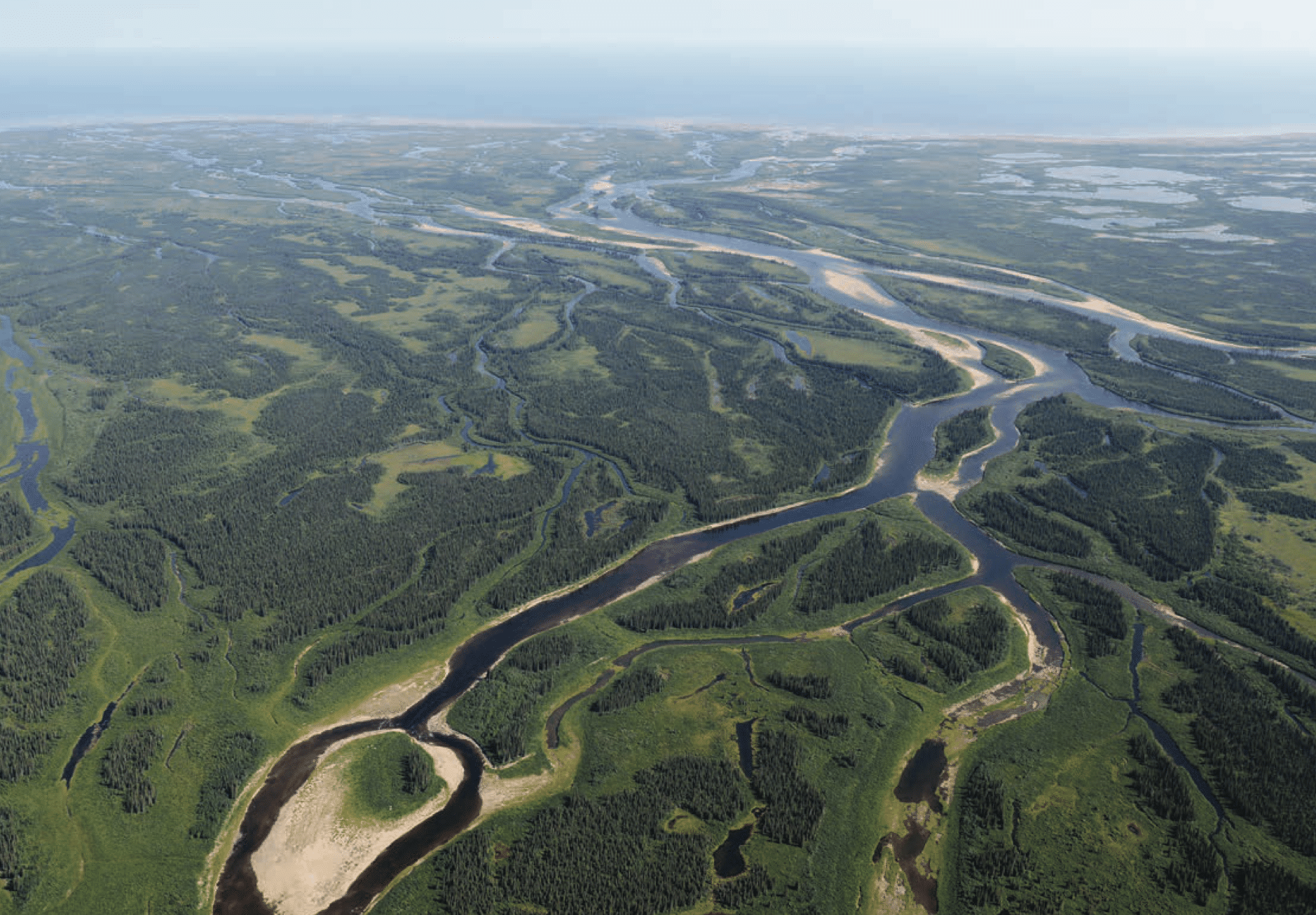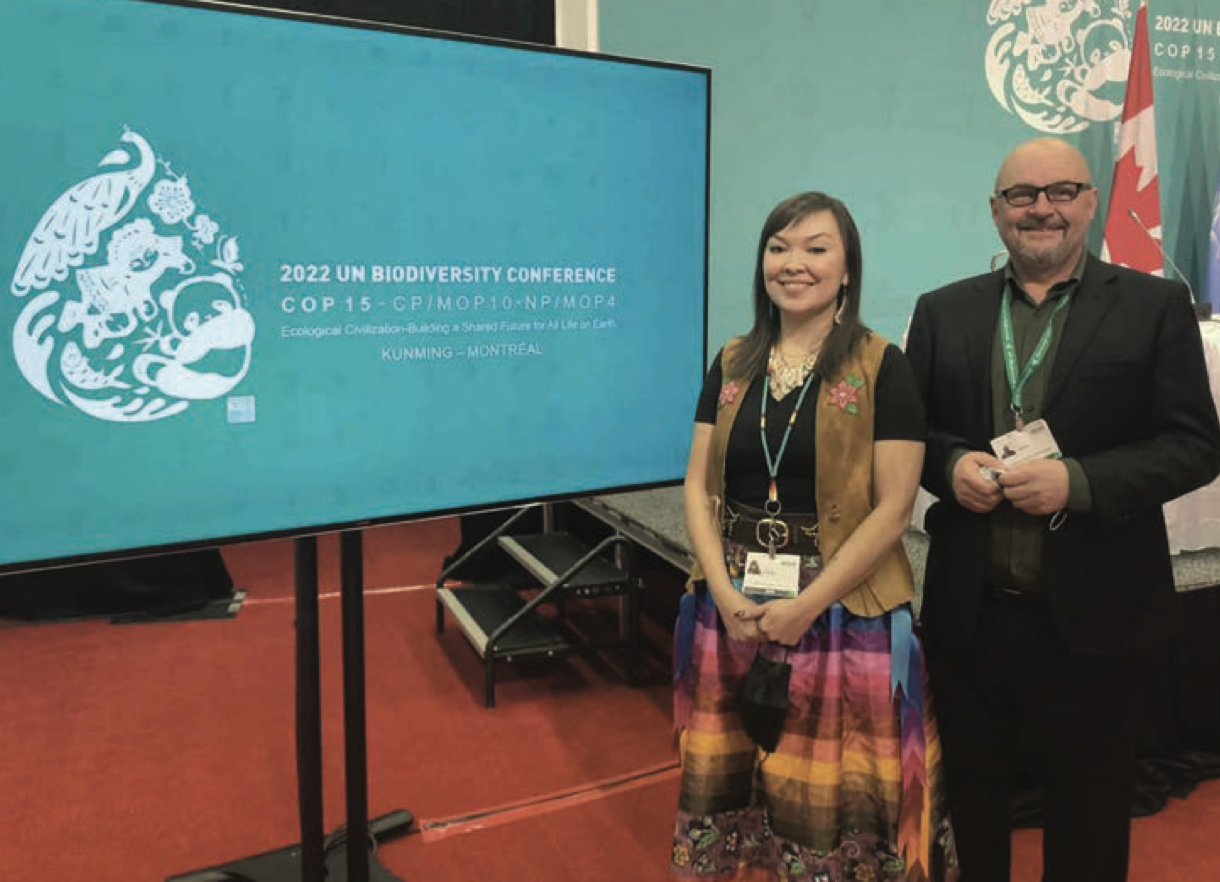
How lessons from Indigenous conservation have shaped the CPAWS mission.
An outstanding First Nations campaign in Manitoba that’s now on the cusp of creating one of the largest Indigenous protected areas in the country had a modest beginning—as a conversation with CPAWS Manitoba about how to save caribou.
“It was about trying to think of ways to organize to advocate on behalf of the caribou,” recalls Stephanie Thorassie, Executive Director of the Seal River Watershed Alliance and a member of the Sayisi Dene from Tadoule Lake, Manitoba.

The Alliance is a group of the four Manitoba First Nations now negotiating the terms of a feasibility study with the province and federal government on the way to protecting the vast, 50,000-square-kilometer Seal River Watershed—an area bigger than Nova Scotia. In 2017, former Sayisi Dene Chief Ernie Bussidor sparked the campaign with a call to CPAWS Manitoba’s Executive Director Ron Thiessen to raise the alarm about the region’s dwindling caribou. Ron visited Tadoule Lake shortly after and their discussion quickly evolved to launching an effort to conserve the watershed and Sayisi Dene’s way of life.
CPAWS helped Bussidor apply for federal funding and to start the ambitious protected area push, says Thorassie, but then the organization deftly stepped back, providing support while making way for the Alliance to take the lead. “CPAWS began in a role of really helping with everyday project stuff, and now that’s changed to really being a supporter and partner in Indigenous-led conservation.”
The Seal River Watershed campaign is among the latest examples of CPAWS’s work in recent decades to get behind Indigenous efforts to create vast protected areas on traditional territories throughout Canada. It’s work that reflects CPAWS’s now-fundamental recognition—one that’s evolved during its 60 years of place-based conservation—of the central role for Indigenous culture and stewardship.

The Seal River Watershed, a vast, 50,0000-square-kilometre area bigger than Nova Scotia. Photo: Ron Garnett.
“CPAWS was among the earliest groups to embrace the fact that conservation can’t—and shouldn’t—happen without Indigenous leadership first,” explains CPAWS National Executive Director Sandra Schwartz. “These days, that idea animates our mission and everything we do.”
CPAWS’s initiatives alongside First Nations, Inuit, and Métis have helped to establish several of the estimated 80 Indigenous protected and conserved areas (IPCAs) now found across Canada, including the 26,000-square- kilometre Tursujuq National Park in Quebec, the equally expansive Thaidene Nëné National Park Reserve in the Northwest Territories, and many others.
CPAWS—along with other members of the Green Budget Coalition—was also influential in coaxing the federal government to provide significant financial support for Indigenous-led conservation. In December 2022, for example, Ottawa announced another $800 million over seven years to support IPCA proposals that could mean another one million square kilometres toward the federal pledge to protect 30 percent of land and ocean in Canada by 2030.
AN UNEASY HISTORY
It wasn’t always this way. Conservation in Canada—as in many world nations— had an uneasy history with Indigenous peoples.
Early proponents of Canadian parks considered the exclusion of Indigenous communities (and their use of parkland wildlife) as essential to conservation. In the 1920s and 30s, for example, James B. Harkin—the first commissioner of the Dominion Parks Branch and the father of Canada’s national parks—was an ardent proponent of this colonial view.
Through much of the last century, a lack of understanding for Indigenous concerns also affected non-government conservation organizations. Among them was CPAWS’s predecessor, the National Provincial Parks Association of Canada, which was created in 1963 to defend nature from the threat of development in Canadian parks.
“We hardly had any consciousness of Indigenous interests,” recalls Gordon Nelson, one of NPPAC’s founding figures. “It wasn’t that we didn’t quite quickly come around to it once we realized that what we were doing was ignoring their traditional rights.”
By the late 1970s, Canada’s dawning awareness of Indigenous conservation gained national attention with the release of Justice Thomas Berger’s inquiry into oil pipeline development in the Northwest Territories. Berger’s report—which emphasized recognition of First Nation’s land rights and the protection of nature—became a cri de cœur for many environmental groups and highlighted the complementarity of many Indigenous values and conservation aims.
“A lot of the interest arose as a result of the Berger stuff,” remembers Herb Norwegian, Grand Chief of the Dehcho First Nations in the Northwest Territories. “After that, as we continued to raise issues up North here, we were able to bring a lot of groups on our side. … CPAWS was right there at the earlier stages, at the driving edge of it.”

Stephanie Thorassie and Ron Thiessen at the COP15 in Montréal, in 2022
CPAWS’s alliance with the Dehcho faced an important early test of the organization’s then-evolving commitment to Indigenous conser- vation: a decade-long campaign to expand protection of the South Nahanni River Watershed. In 2009, the successful push resulted in the expansion of the Nahanni National Park Reserve—a 30,000-square-kilometre IPCA that’s now among the largest in the world.
Norwegian recalls early on-the-ground work by CPAWS helping the First Nations to document traditional land use in the watershed. Once negotiations with Canada and the territory began to look promising, CPAWS helped organize a cross-country tour to major Canadian cities to drum up national support for the plan.
“We had to educate the public, and CPAWS was effective at that,” explains Norwegian. “We wanted to make sure that people didn’t feel that they were letting something go. In fact, the message that we were delivering then was that the Nahanni is a gift to the world. … CPAWS was right there. We were natural allies and partners.”
Mary Granskou was CPAWS National Executive Director for much of that time. She remembers the bond forged with the Dehcho as pivotal in the organization’s early recognition of Indigenous leadership. Since then, CPAWS efforts to help create more IPCAs across Canada have benefitted from those early lessons.
“At that time, we were just mustering up the courage to create relationships,” Granskou says “We were learning— and it’s always learning, right?—about what does it really mean to be an ally, to be supporting their leadership, their governance, their history, their aspirations? What does that mean?”
Today, Indigenous relationships are central to CPAWS’s mission. CPAWS chapters in regions across Canada benefit from partnerships with many Indigenous governments and communities. Recently, as a gesture of reconciliation, CPAWS national office changed the name of its biannual “Harkin Award” for Canadian conservation.
INSPIRING SUPPORT
For Stephanie Thorassie of the Seal River Watershed Alliance, it was CPAWS’s heavy lifting in the early days of the campaign that made a significant difference. In particular, she credits the organization’s capacity to inspire support among Manitobans— thousands of whom have sent sent encouraging letters—as important to the campaign’s momentum.
Now, an agreement to finally protect the traditional territories of many Dene and Cree Peoples within Manitoba is getting closer. Following a recent Manitoba cabinet shuffle, Thorassie expects signatures on a memorandum of understanding for a feasibility study of the new IPCA sometime soon.
“CPAWS was really helpful in some of the engagement work we have to do,” she says. “That’s the sort of thing CPAWS is really great at doing, advocating Manitobans for support. … “We’re really grateful and thankful.”
